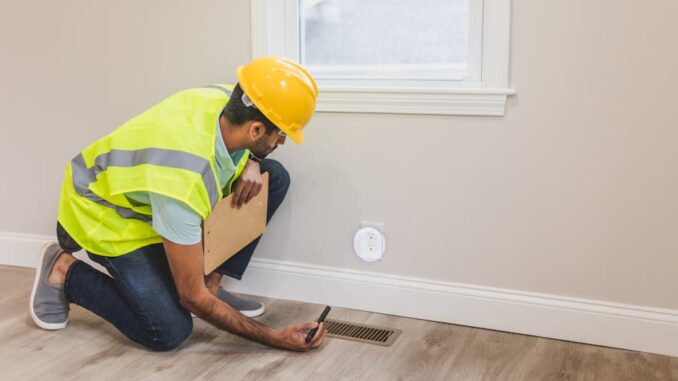
Summary
Enhance building energy efficiency by focusing on insulation, air sealing, and HVAC upgrades. Prioritize a whole-building approach for optimal, long-term performance. Implement smart technologies for intelligent energy management and reduced consumption.
Successful low-energy building design hinges on careful planning. Focus360 Energy can help.
** Main Story**
Want to boost your building’s energy efficiency? It’s a smart move that pays off in lower costs and a smaller carbon footprint. But where do you start? Well, this guide breaks down the actionable steps you can take to seriously improve your building’s energy performance. These aren’t just suggestions; they’re proven strategies for a more sustainable and efficient building. So, let’s dive in.
Step 1: Know Where You Stand: Assess Current Performance
The first step is to understand where your building is right now. Think of it like a health checkup, but for energy. You’ll want to conduct a comprehensive energy audit, and, honestly, it’s the most important part. This audit pinpoints the areas that are bleeding energy, and it helps you figure out which improvements will give you the biggest bang for your buck.
What does an energy auditor do? They’ll look at everything: insulation, air leakage, how efficient your HVAC system is, and even your lighting. After the assessment, they’ll give you customized recommendations based on your building’s needs.
Also, consider using tools like the ENERGY STAR Portfolio Manager. It’s a great way to benchmark your progress and stay on track over time, it helps keep you honest, you know?
Step 2: Seal the Deal: Insulation and Air Sealing
Insulation and air sealing: they’re the dynamic duo of energy efficiency. Forget about just patching things up here and there. Go for a whole-building approach. That means looking at everything – walls, roof, windows, doors, even the foundation. Make sure there’s enough insulation everywhere, and don’t skimp on quality materials, like polyisocyanurate (polyiso) if you want high thermal resistance.
And don’t forget air leaks! Seal those bad boys around windows, doors, and any other opening. Drafts are the enemy. Proper insulation and air sealing can slash your building’s energy usage, keeping the heat in during winter and out during summer. I mean, who doesn’t want lower energy bills?
Step 3: Crank it Up (Efficiently): HVAC Upgrades
Let’s face it: HVAC systems are energy hogs. If yours are old and inefficient, it’s time for an upgrade. Think high-efficiency units with smart controls. Smart motors in HVAC systems are game-changers, they adjust their speed based on real-time needs, saving energy without sacrificing comfort. And make sure your HVAC units are properly sized and well-maintained. It’s like tuning up your car – it keeps everything running smoothly.
Step 4: Shed Some Light (the Right Way): Lighting Optimization
Ready for a quick win? Lighting upgrades are where it’s at. Ditch those old incandescent or fluorescent lights for LEDs. LEDs use way less energy (up to 75% less!) and last way longer. Plus, they look great. For even more savings, integrate smart lighting systems. These systems automatically adjust light levels based on occupancy and natural light. It’s like having a light butler!
Step 5: Get Smart: Smart Technologies
Smart technologies are the future of energy management, and it’s a future that’s here now! Install smart thermostats to fine-tune heating and cooling schedules based on when people are actually using the building. Smart meters give you real-time data on energy consumption, which helps you make smarter decisions. And building management systems (BMS) are like the brain of your building, integrating and controlling everything from HVAC to lighting to security. It’s all about centralized control and optimization.
Step 6: Get Everyone Involved: Occupant Engagement
Don’t underestimate the power of people. Educate your building occupants on energy-saving practices. Make them aware of how much energy they’re using and encourage them to be responsible. Simple things like turning off lights when leaving a room and adjusting thermostats can add up. I once worked at a place where they had a competition to see who could save the most energy at their desks. It was surprisingly effective!
Step 7: Keep an Eye on Things: Monitor and Adapt
This isn’t a set-it-and-forget-it situation. Continuous monitoring is vital for long-term energy efficiency. Track energy consumption data regularly, and analyze the trends, alright? Find areas where you can improve even further and adapt your strategies as needed. The world of energy efficiency is always evolving, so stay informed about new technologies and best practices.
So, that’s it! By following these steps, you can seriously boost your building’s energy efficiency. It’s not just about saving money; it’s about creating a more comfortable and sustainable environment for everyone. Remember, it’s a whole-building approach, with ongoing monitoring and adaptation that will give you the best bang for your buck. What are you waiting for? Get started today.


I appreciate the focus on occupant engagement; employee awareness programs can significantly amplify the impact of building-wide efficiency upgrades. Sharing real-time consumption data can motivate behavioral changes and foster a culture of sustainability.
Thanks for highlighting occupant engagement! I agree completely. Making energy consumption data visible is powerful. Have you seen examples where gamification increased participation? I’m curious about innovative approaches to motivating sustainable behaviors in buildings.
Editor: FocusNews.Uk
Thank you to our Sponsor Focus 360 Energy
The comprehensive energy audit is rightly highlighted as crucial. Are there specific metrics or KPIs, beyond those provided by ENERGY STAR, that you find particularly useful in evaluating building performance and guiding improvement strategies?